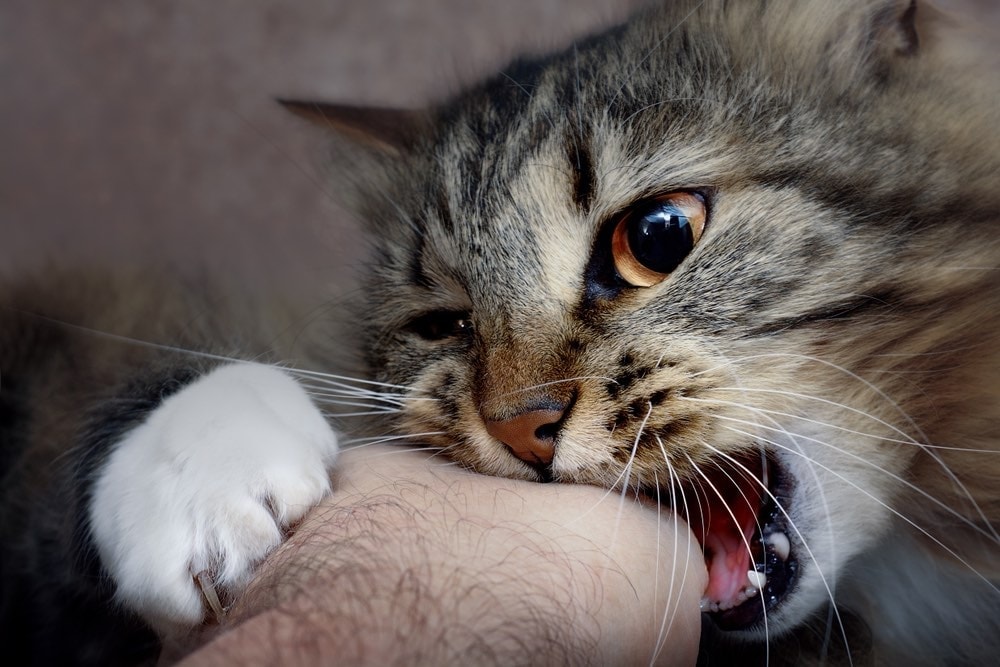Why Do Cats Bite Each Other’s Necks? 6 Vet-Reviewed Reasons
Updated on
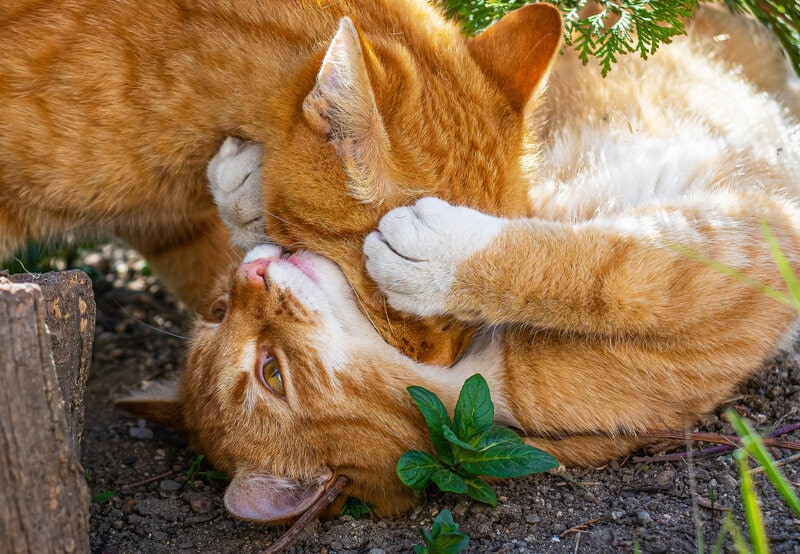
Your cats are just casually hanging out when suddenly, one of your cats pounces on the other and starts biting their neck. Why on earth is this happening? We know that cats are a unique species with their own ways of doing things. Neck biting is yet another behavior to add to the list.
If you’ve seen your own cats engage in this behavior or perhaps you’ve just watched a video with two cats neck biting, you probably have a few questions. Here, we go over six reasons that cats partake in this behavior and how you can prevent it from happening, particularly if it seems to be aggressive.
The 6 Main Reasons Cats Bite Each Other’s Necks
1. Play Behavior
If you have kittens, you’ll notice them playing in ways that mimic aggressive and hunting behavior. They will stalk, pounce, bite, claw and jump on other kittens and objects.
This kind of play teaches them the essential skills of hunting and communication that they need when they become adults. When they attack their siblings, they learn important social cues and information about the world around them, though they can sometimes be overexuberant.
Neck biting can occur during these playfighting sessions, and while most cats will outgrow this behavior, some will not. If two cats are biting each other’s necks but don’t seem to be demonstrating any real aggression, they are just play biting.
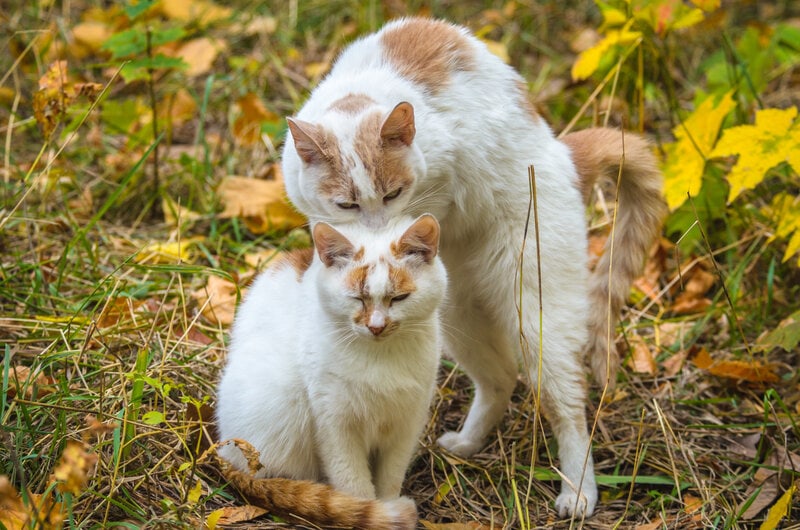
2. Mating Behavior
When an intact male mates with an unspayed female, the copulation is brief, noisy, and seemingly aggressive. During the act, the female will scream at the male and attempt to either escape or attack him, so the tom bites the back of her neck. This helps hold her in place and ensures his safety — at least until he’s finished, because then he needs to get out of there!
Now while this behavior is normal under these circumstances, sometimes spayed and neutered cats will still take the mating stance, even with cats of the same sex. This might happen because they are exerting dominance or because they enjoy it. You might even notice this behavior directed toward toys or other pets.
3. Showing Dominance
In some cases, when a cat shows dominance over another cat, it happens because a new cat has been introduced into the household. This behavior can occur inside or outside when a cat is claiming territory. The neck is an easy spot to reach and features into their hunting instincts.
This instinct to dominate also shows up between two cats that know each other well. As long as the cat being bitten doesn’t seem to be in pain, it’s usually a combination of play and dominance.
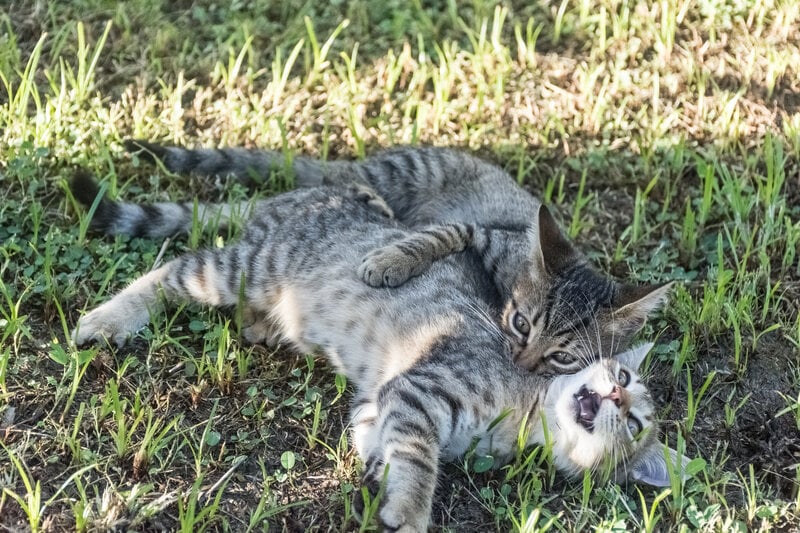
4. Hunting Instincts
For hunting purposes, the neck is one of the most vulnerable areas on an animal. All predators tend to go for the neck when attacking prey, where the susceptible jugular vein is. Grabbing another animal at the neck can sometimes be those inborn hunting instincts kicking in.
These instincts are typically more common in younger cats because it’s a part of learning about hunting. When cats get carried away with playing, those predator urges might kick in, though usually without causing any damage or pain to the other cat.
5. Fighting for Resources
Neck biting might come out as aggression over toys, food, or attention. This is part of the “showing dominance” side of neck biting. Resources can be claimed by a dominant cat as their territory because they feel like they are protecting their belongings.
However, the neck biting might also be accompanied by hissing, yowling, and full-on fights, which go beyond play and into aggression. If one cat seems to be protecting the litter box or bites when you’re petting the other cat, you’ll need to address these behaviors.
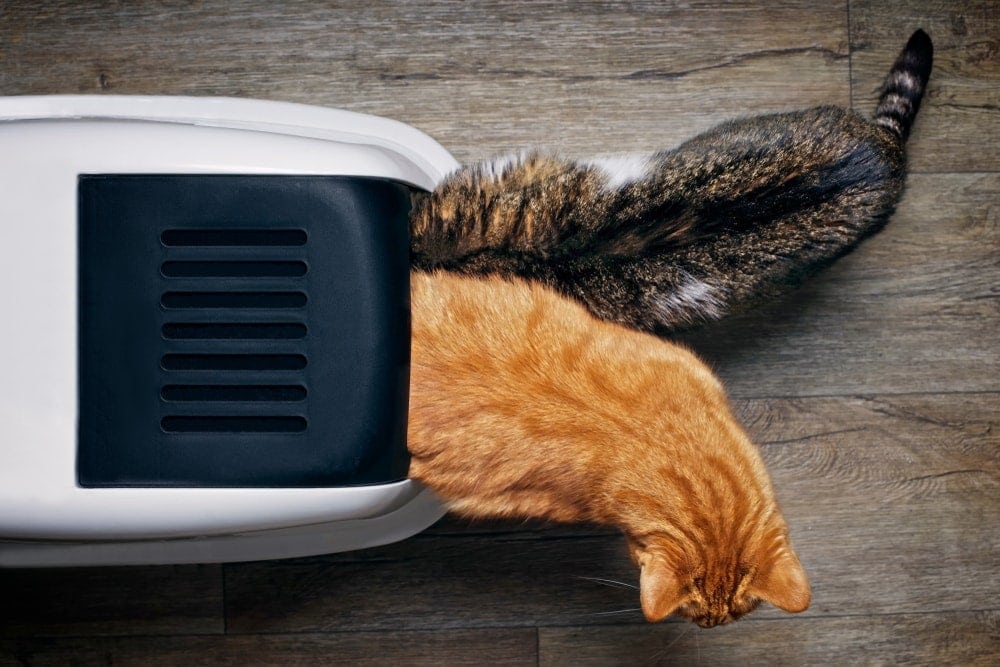
6. Medical Reasons
You should only worry if your cat has started neck biting and has generally become more aggressive lately. If your cat seems to have had a sudden behavioral change, it could be from a medical problem. A cat in pain might start to direct that pain toward another cat through redirected aggressive behavior.
Certain medical conditions, such as hypothyroidism, hormonal imbalances, and cognitive problems, can all result in aggression. If you notice a sudden change in your cat’s behavior or mood, make an appointment with your vet right away.
How Can You Stop Aggressive Biting?
There are a few steps that you can take if you’re worried about neck biting, particularly if it seems more aggressive and less playful. In some cases, you might need to speak to your vet or get an animal behaviorist involved.
- Learn to recognize the precursors. The best way to deal with aggressive behavior is to prevent it. A crucial step is learning to recognize the precursors to the aggression by understanding what triggers it and knowing the steps that can be taken to prevent and redirect it.
- Don’t reward. It’s best to try to stop the behavior before they start the biting. If you give a treat to a cat after an attack, they will believe that you’re rewarding their behavior.
- Don’t punish. Remember that punishment will not work with cats. They only grow to fear and resent their owners, and they might also take it as an invitation to act with more aggression.
- Be consistent. Make sure everyone in your household knows the rules, and they all consistently follow them. Your cat might get mixed messages, which means the lessons won’t work.
- Keep them busy. Offer a range of toys they can chase, bite, hunt, or kick instead.
Conclusion
In many cases, cats might just be playing a little rough, including neck biting, and that’s normal behavior and nothing to worry about. If you notice more behavioral changes and the cat becoming more aggressive, speak to your vet on the chance that there might be something medically wrong with your cat.
If this behavior starts up suddenly but you’ve also brought a new pet into the home, it could be a dominance and territorial issue. Just keep an eye on the situation, and only step in if things seem to be getting out of hand.
As long as the cats aren’t screaming and hissing and there isn’t any fur flying, they are just playing. Cats have a unique way of showing their love and affection, not only with other cats but also with their people.
Feature Image Credit: Michael Cabal, Shutterstock






